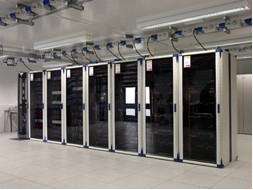Kurt Johnson: March 2011 Archives
Under the direction of IT Services, Facilities Services IT management team has been steadily switching its server platform from physical servers to virtual servers, also known as virtual machines (VMs).
So what is a VM and why is it more sustainable? A VM is a server that exists virtually and is therefore not tied to any one piece of hardware. If a simple example is helpful, think of Gmail and the way it works; the entire application is virtualized, none of your emails exist anywhere on your computer’s hard drive. A VM platform is a more sustainable way to manage computing tasks for at least two reasons, neither of which are normally possible with physical servers.
A VM platform allows for the full (usually about 85-90%) computing power of the underlying hardware to be utilized; this reduces electricity and material consumption.
When a VM platform is being employed, server operations can be fluidly reassigned across underlying hardware in a matter of minutes, making VMs much more adaptable to the changing needs of their clients. This greater adaptability reduces time and labor and thereby increases the amount of computing that can be done with fewer resources.
Because of these efficiency gains, a standard VM is both much smaller and uses far less energy than its physical server counterpart. A typical VM at the U of C uses only 13 watts of power on average, while a physical server uses 281 watts, making VMs much more sustainable.
Recognizing the increased sustainability of VMs, Facilities Services IT management team is going virtual. Facilities Services currently operates 42 servers, 27 of which are already virtualized. By the end of 2011, 32 of Facilities Services’ servers will be virtualized, with the remaining physical servers replaced by virtual servers upon their decommissioning. Facilities Services plans to eventually have its entire server platform virtualized.
Be sure to look for a forthcoming, comprehensive case studying outlining the other exciting ways in which IT Services at the U of C is using technology to become more sustainable.

Special thanks to IT Services personnel and SAGE Ambassador, Chuck Korponya, for helping to produce this post.
Photo courtesy of: http://mjrinfotech.com/; accessed 8 March 2011
